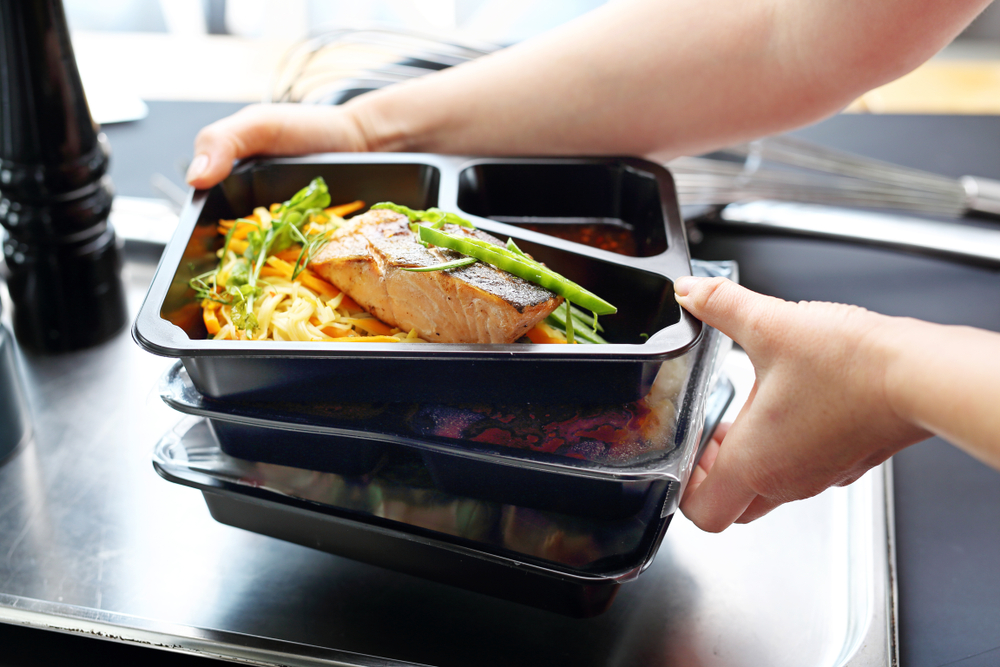SUMMARY
If you like milk but don’t do well with dairy, there’s good news: There are lots of non-dairy milks currently on the market. Your choices include everything from soy milk to hemp milk, and each has its own unique strengths.
There’s no shortage of non-dairy alternatives to cow’s milk, and new ones seem to be popping up every day.
Since there are so many instances of lactose intolerance and dairy sensitivity, it’s nice to have options. Still, it can be hard to choose.
With these plant-based milks, there’s a massive variety in flavor and texture. There are also differences in nutrition; how do you know which milk substitutes are truly healthiest?
In this article, we’ll take a look at several non-dairy milks, and evaluate the strengths and weaknesses of each product.
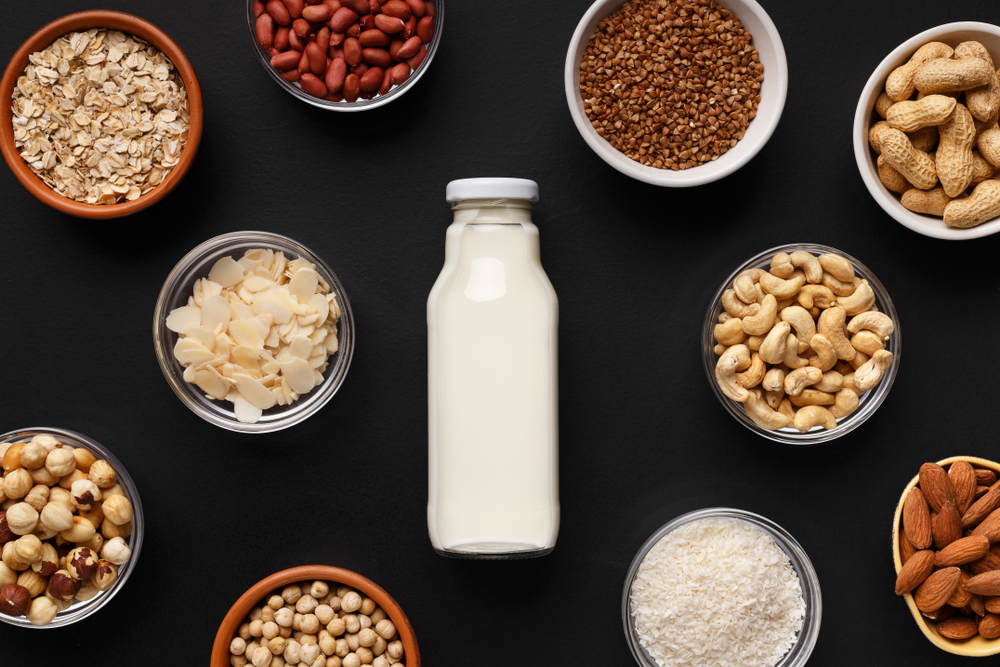
Before we dive in, here’s a quick top-view assessment of what each non-dairy milk has to offer:
Among the healthiest: Soy milk. High in calcium and protein, with low environmental impact and low fat. Well-rounded, healthy choice.
Among the unhealthiest: Banana milk. Super high in sugar, carbs and calories, without very much fiber and protein.
Outstanding flavor: Oat milk. Creamy texture, combined with a sweet, rich but mild taste give it the perfect flavor profile.
Top choice for calcium: Almond milk. Most non-dairy milks are “fortified” with calcium, but almond milk has more than most: 45% of your daily recommended intake.
Top choice for protein: Soy milk. Depending on the brand, there’s usually around 9 grams of protein per serving.
Most keto-friendly: Hemp or coconut. Higher in fat and low in carbs.
Most environmentally friendly: Soy milk and pea milk. Soy creates fewer greenhouse gases than cow’s milk and most other alternatives.
Here’s more on how alternative milks impact the environment.
Ultimate guide to the best non-dairy milk alternatives
Here’s our breakdown of everything you need to know about plant-based milk alternatives.
Soy milk
Nutrition: One cup of unsweetened soy milk (West Soy Organic) has:
- 100 calories
- 9 grams of protein
- 5 grams of fat (mostly polyunsaturated)
- 4 grams of carbohydrates
- 1 gram of fiber
- 3 grams of sugar
Texture: Soy is a very mild milk that’s creamy and thick-tasting. It has a very rich texture.
Flavor: “Some say that it has a mild chalky taste, but I find clients generally enjoy it,” says Seattle-based registered dietitian Ginger Hultin. Plus, you can get soy milk in flavors such as vanilla and chocolate.
Benefits: Among non-dairy milks, soy milk is a leading source of protein. It’s a great ingredient to use if you want to make a protein-rich smoothie.
“It mimics the properties of dairy milk very well and you can use it in cooking and in many recipes,” says Hultin.
Downsides: Soy milk has gotten a bad rap in recent years after some research was popularized regarding the negative effects of soy on estrogen production. The good news is, that was only partially true.
Here’s Hultin’s take: “Some very old studies show that with excessive consumption, soy has the potential to create negative effects for men and women regarding hormones and fertility. You won’t have to worry about any of that if your intake is moderate; current recommendations are 1-3 servings per day,”.
Another downside is that some people with soy allergies or intolerances may react poorly to soy milk.
How to use: Soy milk is great for baking. You can also pour it over cereal or use it in smoothies.
Environmental impact: During the farming process, soy creates less greenhouse gas emissions than dairy but more than almonds and oats. However, soy uses very little water to produce, so there’s a major benefit there. Overall, it has a small footprint compared to other options.
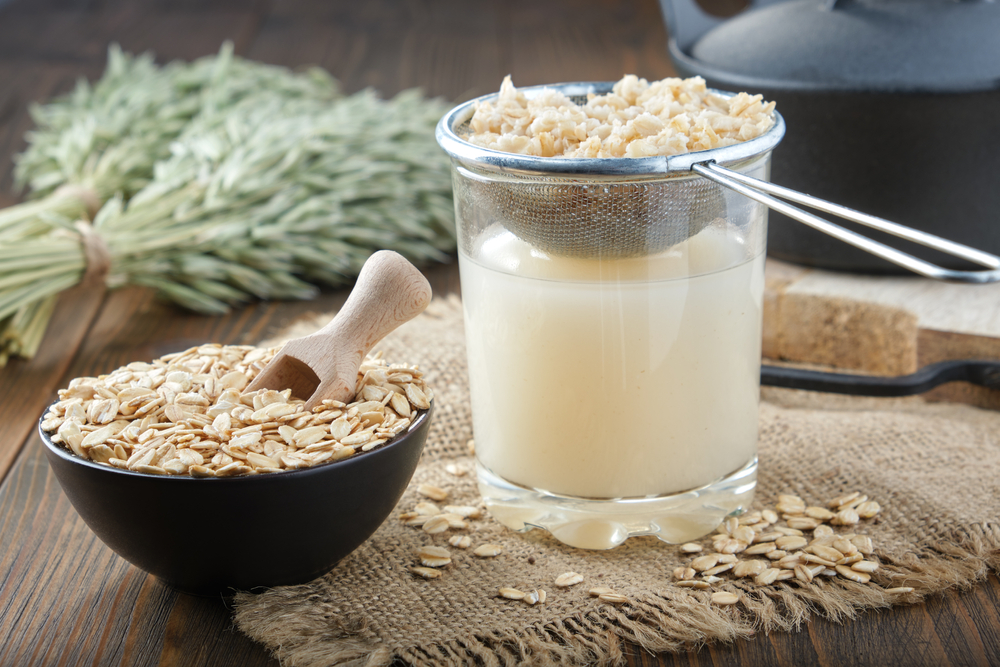
Oat milk
Nutrition: One cup of unsweetened oat milk (Califia Farms brand) has:
- 130 calories
- 1 gram of protein
- 7 grams of fat (only 1 gram saturated)
- 14 grams of carbohydrates
- 0 grams of fiber
- 3 grams of sugar
Texture: Oat milk is relatively high in fat, so it’s very creamy and mild tasting, says Hultin.
Flavor: Tastes mild. Not very strong, but also not bland. “Some say it’s a bit sweeter tasting than dairy milk but it’s quite comparable in flavor overall,” says Hultin.
Benefits: On its own, oat milk isn’t very high in nutrients (like oats are), so make sure to get an enriched variety. Oat milk also is great for those with allergies, since it doesn’t contain nuts, soy, and other common allergens that can lead to gastric distress, rashes, and more serious conditions. Plus, it is environmentally friendly and has a delicious taste for coffee drinks. (That’s why it’s used at so many fancy coffee shops!)
“Though oat milk needs to be pasteurized, studies do show that it maintains many of its vitamins even after this processing. Keep in mind that prolonged storage of oat milk can start to degrade some of its nutrients, so make sure to get a variety that’s not close to its expiration date,” says Hultin.
Though research is mixed, it appears that oat milk may be able to offer some heart-healthy benefits. As with oats, it may help lower cholesterol.
Downsides: Oat milk is pretty high in carbs, so if you’re on a keto diet, make sure to keep the portions small. “Make sure to shake the box or bottle before using it so that it isn’t separated when you pour it,” adds Hultin. Yuck.
If you’re someone who has a gluten sensitivity, this may be a tricky option for you. Not all oat milks are gluten-free, so if you’re going to try this beverage, get a variety that caters to your needs.
How to use: Oat milk is amazing in coffee. It also works well for smoothies or baking purposes.
Environmental impact: Environmentally, oats create very low greenhouse gas emissions. While oat production requires more land than some alternatives, it requires much less water than both dairy and almond milks, says Hultin.
Almond milk
Nutrition: One cup of unsweetened almond milk (Malk brand) has:
- 130 calories
- 5 grams of protein
- 11 grams of fat (only 1 gram saturated)
- 3 grams of carbohydrates
- 3 grams of fiber
- 1 gram sugar
Texture: It has a less creamy and thinner texture than oat milk or coconut milk.
Flavor: The taste has a bit of a nutty flavor to it. We recommend getting unsweetened vanilla.
Benefits: It is low in calories and has healthy fats from almonds to lower inflammation and protect the heart. You can easily enjoy almond milk on any diet where you want to lose weight, since it doesn’t contain a whole lot of saturated fat or calories per serving.
Downsides: It’s lower in protein than some alternatives. Plus, it is thinner in texture than other milks on this list. You might want something richer and less watery tasting if you’re seeking an ingredient for use in coffee drinks or baked goods.
How to use: Great for drinking plain, adding to coffee or smoothies, using in recipes and baked goods.
Environmental impact: Sustainability depends on the farming practices of growing the almonds. Almonds usually require more water during the farming process than some of the other choices on this list.
Hemp milk
Nutrition: One cup of unsweetened hemp milk (Living Harvest brand) has:
- 80 calories
- 2 grams of protein
- 8 grams of fat (0.5 gram saturated)
- 1 gram of carbohydrates
- 0 grams of fiber
- 0 grams sugar
Texture: “Hemp milk is high in fat, and that makes it one of the thicker milks (especially compared to almond or rice). It’s a good keto milk because the fat is high and the carbs are low,” says Hultin.
Flavor: Some say it has a slightly nutty flavor, but it is very mild and subtle. So, depending on your preferences you might like it!
Benefits: Hemp milk naturally contains calcium and iron. It has more calcium than cow’s milk.
It’s also packed full of healthy fats. “One of the best things about hemp milk is that it also contains anti-inflammatory omega 3 fatty acids,” says Hultin. The omega 3 and 6 essential fatty acids are in a 1:3 ratio, which is optimal for benefiting brain and heart health and acting as an anti-inflammatory.
Downsides: “A downside or con would be availability and cost; it may be hard to find in some regions and it may be expensive,” says Hultin. It also has less protein than some of the other choices on our list.
Additionally, hemp milk has a thick texture that you might not like as much for drinking plain, though it shouldn’t be an issue when this milk is being used for baking or cooking. It is also higher in saturated fat than some other milks, like soy or almond, so be mindful.
How to use: Best when used for cooking or baking.
Environmental impact: Environmentally, hemp is known as a sustainable crop. Hemp requires very little water and is typically grown without herbicides and pesticides.
Coconut milk
Nutrition: One cup of unsweetened coconut milk (365 Everyday Value Organic Coconut Milk) has:
- 50 calories
- <1 gram of protein
- 6 grams of fat (5 grams saturated)
- <1 gram of carbohydrates
- 0 grams of fiber
- <1 gram sugar
Texture: Coconut milk is a creamier option than choices such as almond milk.
Flavor: The coconut flavor tends to shine through, and there’s a subtle sweetness to it.
Benefits: Coconut milk is packed with healthy fats that are good for your heart. It’s naturally rich in vitamins C and E, which have strong antioxidant properties. It’s also rich in electrolytes like magnesium, potassium and phosphorous which support a strong immune system.
Many users love using this alternative for baking purposes, due to its coconut-flavored taste.
Downsides: Coconut milk has less protein than some non-dairy milks. Plus, it’s high in saturated fats, which could be bad for heart health in excess. It’s also a high-calorie option. Use sparingly or in small amounts each day (such as putting a splash of it in your latte).
How to use: Highly recommended for baked goods because of its coconut flavor.
Environmental impact: Coconut milk is very sustainable, as coconuts do not need pesticides or much water during the growth process.
Rice milk
Nutrition: 1 cup of rice milk (Original Enriched Rice Dream Rice Drink brand) has:
- 120 calories
- 1 gram of protein
- 2.5 grams of fat (0 gram saturated)
- 23 grams of carbohydrates
- 0 grams of fiber
- 10 grams sugar
Texture: Since rice milk is made from milled rice and water, it is watery in texture. This may make it a good choice for use with cereal, but it might not be the tastiest pick for a frothy latte.
Flavor: Rice milk is generally sweeter than other milk alternatives, so take note when buying!
Benefits: The biggest benefit to rice milk as opposed to other milk alternatives is that it is one of the least allergenic choices available. If you have a food allergy, this might be the milk for you.
Rice milk is also a good source of calcium, vitamin A and vitamin D, when fortified.
Downsides: Rice milk is very high in carbohydrates, which makes it a poor choice for people with diabetes or those on a low-carb diet plan. It also ihas less protein than many other non-dairy milks, so it’s not the best for athletes or those involved in strength training.
According to the FDA, drinking too much rice milk can be harmful for infants, children, and expecting mothers due to its inorganic arsenic levels.
How to use: Since rice milk is high in carbs, it is best consumed in the morning. This allows you to work toward burning it off in the day.
Try adding rice milk to fruit smoothies. Its sweetness pairs well with fruit and flavored protein powder. Add a scoop of protein powder with your smoothie to supplement, since rick milk is lower in protein than other milks.
Environmental impact: Relatively to other non-dairy milks, rice milk requires a lot of water to produce. Still, it requires less water than dairy milk. It’s about average when it comes to sustainability.
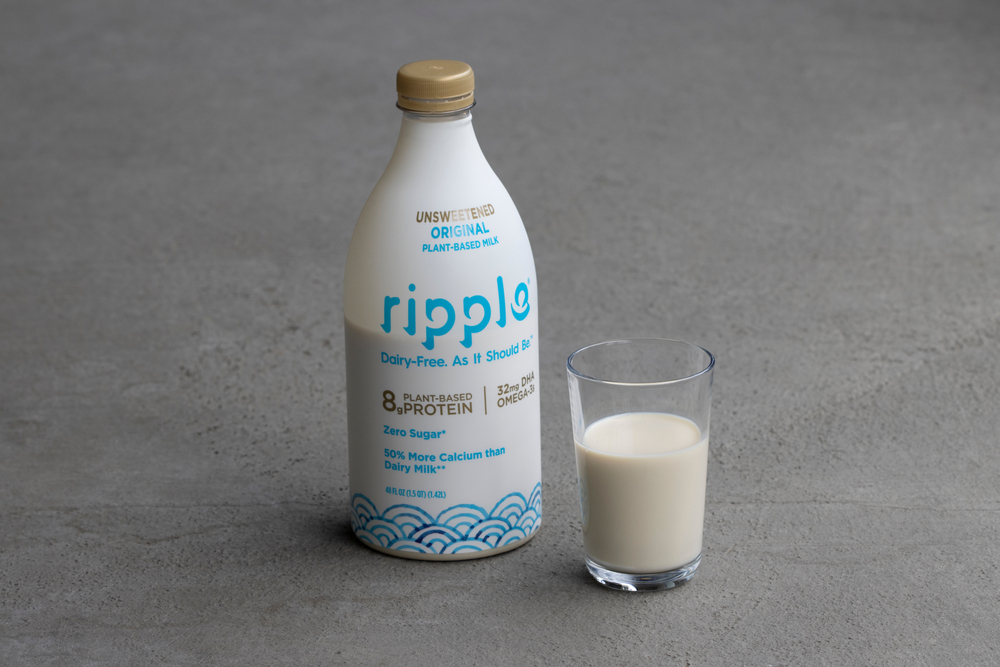
Pea milk
Nutrition: 1 cup of pea milk (Ripple Original brand) has:
- 100 calories
- 8 grams of protein
- 5 grams of fat (0.5 gram saturated)
- 6 grams of carbohydrates
- 1 gram of fiber
- 6 grams sugar
Texture: Pea milk happens to be creamier than standard cow’s milk, and the texture is somewhere between whole milk and half and half. So, it’s a good pick for thicker smoothies and lattes, when you want that dense texture and frothiness. It might not be as good for a standard bowl of cereal.
Flavor: The unsweetened flavor of pea milk has been described as chalky, but this is less of an issue when it’s flavored with vanilla and chocolate. If you like the chalky taste, then enjoy it as is and sip on it plain! And if you don’t, choose a flavored option.
Benefits: As with soy, pea milk is loaded with protein. And it is a better option than soy if you happen to have a soy allergy or intolerance that leads to digestive issues. Pea proteins are relatively easy to digest. That attribute makes pea milk a good choice of you’re looking for a protein-packed beverage that is friendly to your gut.
What’s more, pea milk also has omega 3s, as well as calcium, so it’s good for your bones and heart. And it’s relatively low in calories and sugar.
Downsides: Since some people claim pea milk tastes a bit chalky and like “dry flour,” you really just might not like it! And if you go with a sweetened version, you’re adding in sugar, which isn’t doing your heart and blood sugar any favors.
Although it boasts many benefits, it’s also pretty high in fat, so if you are on a low-fat diet, pea milk might not be the best option.
How to use: Its creamy texture makes pea milk a great choice for coffee and workout shakes, as well as cereal. You can also sip on it plain.
Keep in mind, though, that coconut milk or almond milk are tastier choices for whipping up a batch of cookies.
Environmental impact: Peas require a lot less water than almonds during the farming process. As a result, pea milk is a very sustainable choice.
Cashew milk
Nutrition: One cup of unsweetened cashew milk (Forager Project brand) has:
- 110 calories
- 2 grams of protein
- 9 grams of fat (6 gram saturated)
- 5 grams of carbohydrates
- 0 grams of fiber
- 1 gram sugar
Texture: Cashew milk is very creamy, so if you love that in coffee, go for it!
Flavor: You can taste the cashews, but the flavor is mild and sweet.
Benefits: Cashew milk is pretty low in calories and carbs, and packed with natural nutrients. It also contains the antioxidants lutein and zeaxanthin, which have been said to improve eye health. It’s loaded with zinc, which boosts your immune system and helps your body fight off disease.
Downsides: Cashew milk is a bit pricier than soy or almond milk, so it isn’t the most budget-friendly option. And in comparison to other non-dairy alternatives, cashew milk is high in calories and low in protein.
How to use: Its creamy texture and nutty taste make cashew milk a great choice for coffee beverages. Use in a hot latte!
Environmental impact: When sourced from areas not exposed to drought, sustainability is superior.
Flax milk
Nutrition: 1 cup of flax milk (Good Karma Unsweetened Original brand) has:
- 25 calories
- 0 grams of protein
- 2.5 grams of fat (0 gram saturated)
- 1 grams of carbohydrates
- 0 grams of fiber
- 0 grams sugar
Texture: Flax milk is not as thick as cashew milk or oat milk, and not as thin as rice milk. Its texture is most similar to that of dairy milk, so if you miss the real thing, this might be the milk for you, especially in cereal.
Flavor: Flax milk has a nutty taste to it, but not in a sweet way like almond milk does. It has an earthier taste than other non-dairy milks.
Benefits: Flax milk is a great source of calcium. Also, it’s pretty low in calories and carbs per serving, and this makes it a nice diet option for those looking to cut calories.
It can also work to lower high blood pressure and protect the heart, since it’s loaded with healthy fats that reduce inflammation. It’s rich in vegan omega 3 fatty acids.
Downsides: Flax milk is often heavily sweetened, so check the label when making a purchase. Also, unlike some choices on this list, flax milk does not contain protein.
How to use: Due to flax milk’s familiar texture, it works great with breakfast cereal.
Environmental impact: Flax milk does not require a lot of water to produce, so it’s a sustainable choice. Production is also mostly concentrated in the northern hemisphere (Canada), so shipping emissions are low as well.
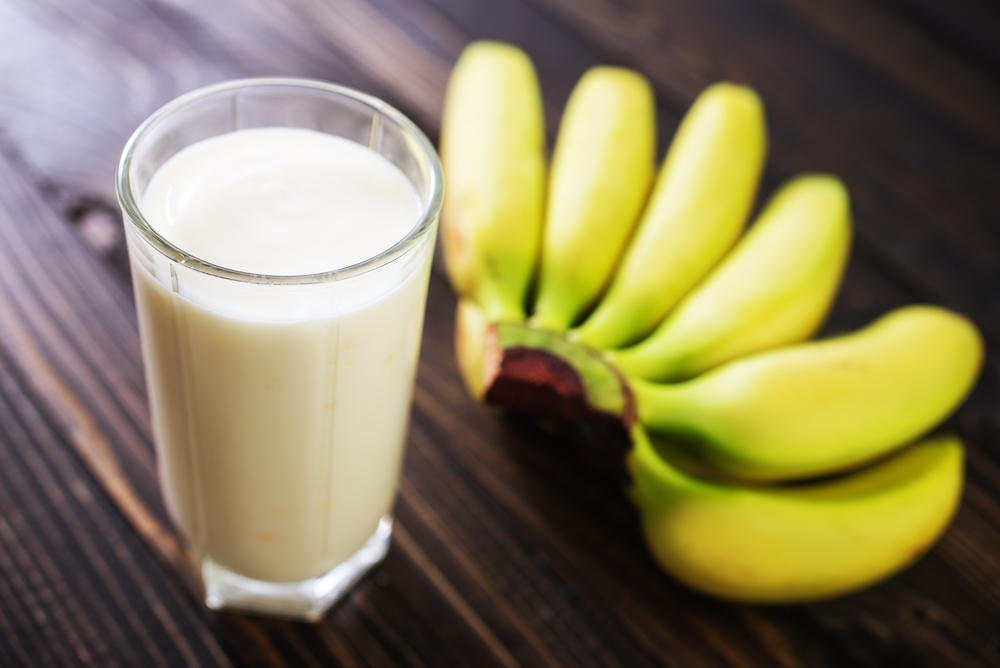
Banana milk
Nutrition: 1 cup of banana milk (Banana Wave brand) has:
- 150 calories
- 4 grams of protein
- 5 grams of fat (1 gram saturated)
- 22 grams of carbohydrates
- 2 grams of fiber
- 18 grams sugar
Texture: Banana milk’s texture most closely resembles that of 2% milk, so it’s somewhat creamy. It could be a nice option for adding some depth to smoothies and other drinks.
Flavor: Banana milk is sweeter than other options on our list, so be wary of that. For instance, you may not want to add banana milk to your latte or iced coffee.
Benefits: Bananas are an excellent source of potassium, and banana milk is no different. So, while you may not use this as your go-to daily milk for all your needs, it could be a good option for after a workout in order to repair muscles and replenish electrolytes.
What’s more, banana milk contains a fair amount of protein.
Downsides: Banana milks are sweeter naturally than other alternative milks, so expect the carb count and calories to be fairly high. And the sugar is definitely the highest among all the non-dairy milk alternatives. This milk can raise blood sugar levels, and that means it’s not a good option if you have a condition such as diabetes.
Also, its sweet taste may clash with certain beverages.
How to use: Use banana milk for baking and some breakfast recipes where a banana flavor is desirable. For instance, add to oatmeal (that would taste amazing!), or use in banana bread, muffins, cookies, and any other baked items for a sweet snack or dessert.
You can also use in post-workout smoothies, due to the protein and potassium content.
Environmental impact: You can make your own banana milk from scratch fairly quickly in your own home by blending a frozen banana with a cup of water and some cinnamon for flavor. This is the most eco-friendly route to take, since bananas require very little packaging. If you go with a store brand, the environmental impact is about average relative to other non-dairy choices.
Next steps
So, which non-dairy milk should you choose?
“When it comes to which milk is the best, we have to make the question an individual one that’s based on a person’s goals and needs. It can be problematic to compare milks generally, because there is such a wide array of ingredients, processing and additives used in the industry per any milk category,” says Randall Evans, MS, RDN, LD.
Since nutrition can vary widely by brand, make sure to always check the nutritional label for the amount of sugar, protein, fat and carbs. Choosing “unsweetened” is usually a good call to avoid unnecessary added sugars.
If you’re still overwhelmed by the massive number of options, stick to our top five non-dairy milks:
- Soy
- Almond
- Coconut
- Oat
- Pea milk
They tend to rank well both in terms of flavor and overall nutrition.
Fresh N Lean is the nation’s largest organic meal delivery service. Our tasty, chef-prepared cuisine is always fresh and never frozen, and we offer convenient meal plans like Protein+, Keto, Paleo, Standard Vegan and Mediterranean. Choose Fresh N Lean for affordable nutrition, delivered to your doorstep.



